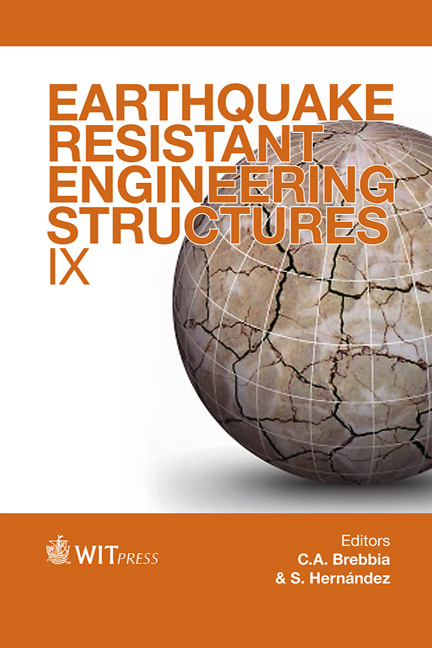Cable Bracing Design In Adaptable Dual Control Systems
Price
Free (open access)
Transaction
Volume
132
Pages
12
Page Range
311 - 322
Published
2013
Size
2,685 kb
Paper DOI
10.2495/ERES130251
Copyright
WIT Press
Author(s)
M. C. Phocas & T. L. Sophocleous
Abstract
Structural control through energy dissipation systems has been increasingly implemented internationally in the last years and has proven to be a most promising strategy for earthquake safety of structures. The present paper examines an alternative control system development for achieving dynamic structural adaptability. The prototype control system consists of a hysteretic energy dissipation device of triangular steel plates and a tension-only bracing with closed circuit realized through implementation of rotating discs at the braces connections. A typical configuration design of the kinetic mechanism consists of a portal- and a chevron cable bracing. Based on three representative international strong earthquake motions of differing frequency contents, parametric dynamic analyses of the SDOF system responses mainly characterized by high energy dissipation have been performed by the authors in previous studies with regard to the mechanical characteristics of the hysteretic damper, i.e. elastic stiffness and yield force, whereas the cables were modelled as frame objects with zero compression limit. In the present study the optimum controlled system is further investigated in its earthquake responses with different cable stiffness values and a pretension stress. The respective numerical nonlinear analyses conducted exemplify the earthquake performance of the bracing-damper mechanism, while a linear elastic resistance of the tension-only members is verified. Keywords: earthquake resistance, frame structures, passive control, cable design.
Keywords
earthquake resistance, frame structures, passive control, cable design





